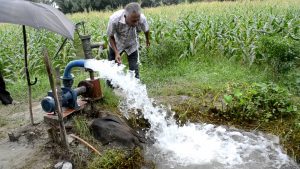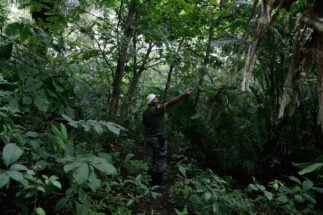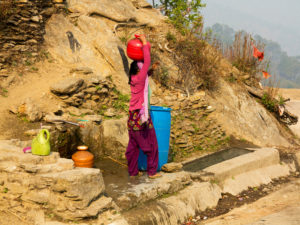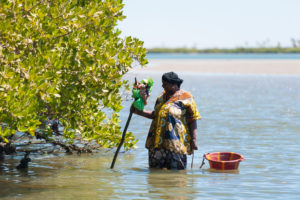Nepal has too much water in the four months of the South Asian monsoon and too little in the other eight months of the year. Rainfall data from the Department of Hydrology and Meteorology confirms the uneven distribution of water in Nepal.
The latest report of the Intergovernmental Panel on Climate Change has shown that the monsoon is becoming more erratic, so Nepal’s water crisis is going to get worse.
The result is more floods, landslides and lightning strikes during the monsoon, which will kill people and destroy livelihoods and infrastructure. In the dry months, the impact shows in water shortages, droughts and wildfires. Home ministry data shows all these disasters are increasing in frequency and severity. Managing this will be Nepal’s key challenge over the coming years.
There are several institutional, legal and policy frameworks to manage disasters. But they focus on immediate rescue and relief, without addressing the causes. Take, for example, the floods in June and July in Melamchi. Since the 1990s, debris and sand has accumulated on the riverbed, reducing the river’s capacity to carry water. This increased the extent of flooding and the vulnerability of people living near the riverbanks.
The increase in debris and sand was due to poorly executed roadbuilding upstream. The soil and boulders removed to build roads were thrown down the hill slopes and rolled down to the river. Tarmacking the roads and channelling streams meant less rainwater could percolate underground. The filling-in of ponds upstream meant less water could be held there. The result is more frequent and more severe flooding. And when floodwaters carry so many stones and boulders at high speed, this also worsens soil erosion.
Climate change not the only culprit
There is a tendency to blame climate change for water-related crises. This ignores the other activities that cause such disasters. All over the Hindu Kush Himalayas, people are suffering because springs are drying up, leaving them with no nearby sources of water. More than climate change, this is due to alteration of natural water channels to build roads or large structures.
200,000 km
Total expected length of rural roads by 2025, a dramatic increase from 61,395 km in 2019-20
In Nepal, ponds that used to collect and store water have been buried or broken for so-called development activities, especially to build poorly planned roads. A study in 2007 showed the country had 10,142 km of surfaced and 7,140 km of unsurfaced roads. A report published by development consultancy Oxford Policy Management in 2021 found the local road network had increased to 53,310 km in 2016 – a 12-fold increase since 1998. By the 2019-20 financial year, this had increased to 61,395 km of roads, of which 54.7% were in hilly regions.
It is expected that development of rural roads will continue to rise until 2030. Total road coverage is predicted to reach more than 200,000 km by 2025. This is causing severe disturbance to the natural infiltration and percolation of water, and leading to disasters such as landslides and floods.
Compacting the soil with heavy machinery for such construction means closing the natural pores through which water percolates underground. This leads to flash floods in the monsoon and water shortage in the dry months.
Poorly built roads change the angle at which soil sits on a hill slope. This change increases landslide risk manifold. The Nepal Police reported 488 landslides across the country in 2020. Of these, 337 (61%) occurred near roads. Remote sensing analysis of 205 landslides since 2008 showed 179 (87%) occurred following the construction of a road.
Quarrying operations worsen the situation. Quarrying a hillside blocks soil pores and accelerates water flow. A lot of rainwater also accumulates in quarries. This saturates the soil and causes more landslides and mudflows.
Sustainable water management is the way to sustainable development
And then there are the urban areas, where there is hardly any open soil that would allow rainwater to percolate underground. The benefits of such percolation are obvious – flood control, more water in wells and tube wells. But this is ignored far too often.
All these activities impede the groundwater-recharging process and alter the springshed, resulting in the drying out of springs. Regulating such activities is the way forward.
What should we do to better manage water in Nepal?
There are ways to build roads in mountains while minimising disturbances to the natural water flow. These ways are not followed in most developing countries because they cost more. But ignoring these methods is proving even more costly due to disasters and water shortages.
Apart from regulations to ensure no construction destroys the environment and us, the most pressing need is for everyone to harvest rainwater. Governments from the local to national level need to build water-recharge ponds, conservation ponds and check dams for water harvesting. Such measures will allow water to flow and percolate throughout the year in moderate volumes.
A recharge pond is sited on top of an underground water channel
Conservation ponds can be built anywhere on or near a hilltop
A check dam is a small dam built across a drainage ditch or waterway to lower the speed of water flow. It helps percolation without stopping the water flow, which can reduce erosion and allow sediments to settle.
When a local government authority approves a plan for a new building in an urban area, it needs to make rainwater harvesting mandatory. This will mean piping rooftop water and domestic wastewater into a recharge pit, and not covering the courtyard or other open spaces in concrete.
There is considerable traditional knowledge that can help. Building a complex of ponds and check dams upstream; building, repairing and cleaning out water-diversion channels before every monsoon; terrace farming, mulching, using organic manure, livestock-farming strategies, all have multiple benefits that handle the problem of too much and too little water. Just as there is no single reason for water-related crises, there is no single solution. All must work together.
Special recharge zones need to be maintained and water-harvesting dams have to be built. The two most prominent areas in need of this are the Shivapuri hills that form the recharge zone for Nepal’s capital Kathmandu, and the Churia hills that are the main recharge zone for the Terai region. Conservation ponds must be revived. Especially upstream of urban areas, new recharge ponds can be dug or revived if they exist already.
A recharge pit in every household will add up to a far better situation in the entire country. Local governments should take responsibility to ensure this, with policy and other support from provincial and federal governments. Sustainable water management is the way to sustainable development.
Nepal needs independent water management bodies at central and provincial levels. The water management capacity of local governments needs to be strengthened. These bodies must work in close coordination with local water user organisations and local communities. Money and human resources required can be raised from all on a participatory and shared basis. All this is written in the Constitution. It needs to be implemented.
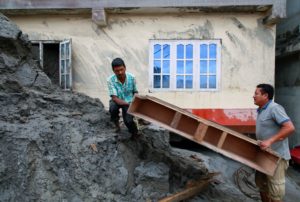
![Sharada Bogati of Bidur-9 cleaning dishes beside her home. Unlike many neighbourhoods in Bidur, families in her neighbourhood get enough water for their daily use and also for vegetable farming [image by: Bhrikuti Rai]](https://dialogue.earth/content/uploads/2018/08/MG_9723-e1595342190272-300x200.jpg)
